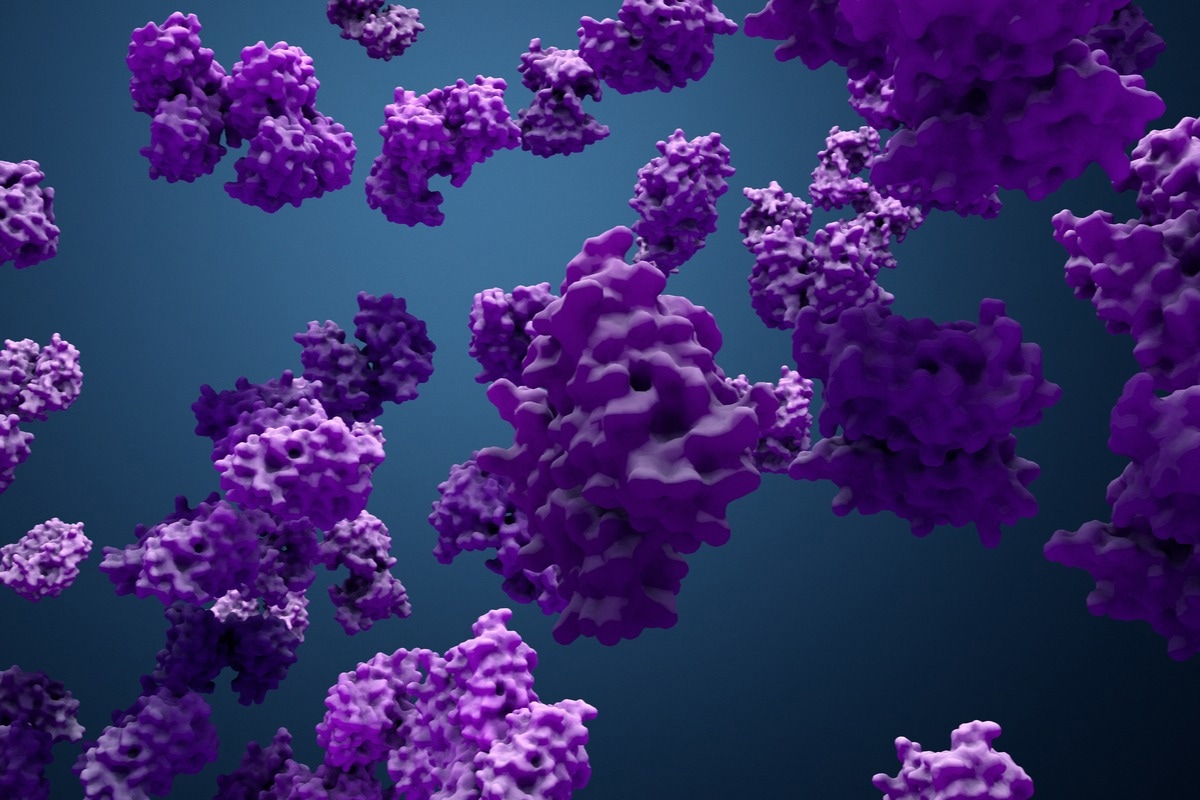Introduction
Supporting evidence
Effects
References
Further reading
Protein arginylation is a post-translational modification that transfers the amino acid arginine from tRNA directly to protein targets via the enzyme arginyltransferase (ATE1). Arginylation can occur on any residue at the N-terminus of a protein and requires a specific structural recognition motif on the protein surface. Arginylation has an essential role in multiple physiological pathways but remains poorly understood.
 Image Credit: Design_Cells/Shutterstock
Image Credit: Design_Cells/Shutterstock
Protein arginylation was discovered in 1963. The enzyme ATE1 utilizes is a charged arginine transfer ribonucleic acid (tRNA) molecule as the donor of the arginine amino acid. This occurs in conventional translation, but in the case of protein arginylation, this process occurs independently of the ribosome. The residues that are targeted for arginylation are acidic and include aspartate or glutamate as well as their counterparts with polar, uncharged chains, asparagine, and glutamine; however, cysteine has been more recently shown to be one of the residues targeted for protein arginylation.
Supporting evidence
When the enzyme ATE1 is deleted in mice, embryonic lethality occurs with subsequent impairments in several physiological systems, including angiogenesis, embryogenesis, aging, cell migration, cardiovascular development, regeneration, and muscular contraction.
Despite this evidence, studies on protein arginylation and the enzyme ATE1 remain relatively scarce. Despite this, it is known that a wide range of proteins are substrates for arginylation, which suggests that the process regulates multiple cellular processes.

 Read Next: Acetylation of Proteins
Read Next: Acetylation of Proteins
Effects
The most prevalent theory concerning arginylation relates to its involvement in global protein degradation. Arginylation has been shown to result in the ubiquitination of substrate proteins, which is subsequently targeted to be degraded by proteosomes or via the process of autophagy. Studies based on artificial substrates have demonstrated the amino acids which are targeted by ATE1.
The implications of this suggest that <20–25% of any eukaryotic organism’s proteome is estimated to be degraded by arginylation. Therefore, it has been suggested that arginylation is particularly central to generic protein degradation machinery. Despite this, the impact of arginylation remains to be determined.
In addition to protein degradation, arginylation has also been suggested to be involved in other processes which include cellular responses to stresses, particularly cardiovascular stresses. Evidence for this comes from the observation that arginylation Is altered in cells or animal tissues in response to high temperatures, high concentrations of oxidants or salt, or as a result of injury.
Arginylation has also been implicated in processes at odds with protein degradation. For example, arginylation of calreticulin during ER stress results in the formation of stress granules as opposed to removal from the cells. Moreover:
- The alpha-helical conformation, of beta-amyloid protein was suggested to be facilitated by arginylation, preventing misfolding and accumulation
- Arginylation of a proteolytic fragment pf talin (a cell adhesion protein) mediates cell-cell adhesion
- Phosphorylation-mediated regulation and contractility of myosin in platelets are affected by arginylation
Although arginylation has been putatively established as a regulator of protein degradation in the cellular stress response, studies often show contradicting conclusions.
It is thought that discrepancies between these findings may arise from differences in test conditions, particularly because historical studies have looked at individual substrates without considering the effects of arginylation on others. To understand the function of arginylation and ATE1’s role in this process, systematic analysis is needed.
References
- Kashina A. (2014) Protein arginylation, a global biological regulator that targets the actin cytoskeleton and the muscle. Anat Rec (Hoboken). doi:10.1002/ar.22969.
- Wiley DJ, D'Urso G, Zhang F. (2020) Posttranslational Arginylation Enzyme Arginyltransferase1 Shows Genetic Interactions With Specific Cellular Pathways in vivo. Front Physiol. doi:10.3389/fphys.2020.00427.
Further Reading
Last Updated: Jul 11, 2022